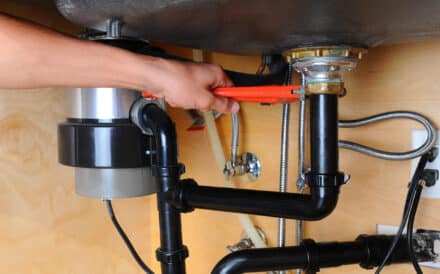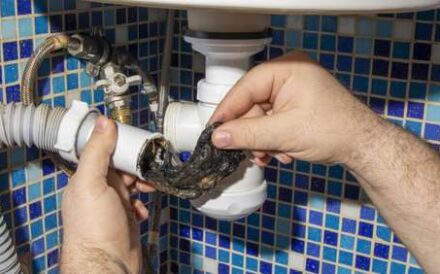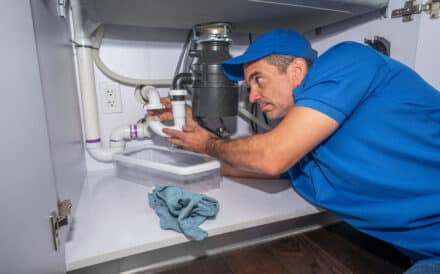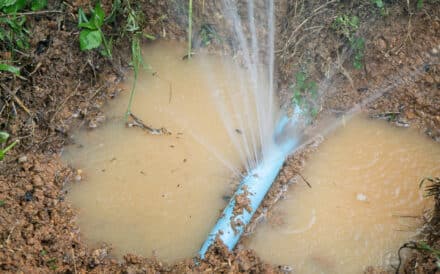Top 5 Ways To Unclog A Toilet
Dealing with a clogged toilet is a hassle. Aside from taking away one of the most important functions in your home, it may mean that you have to contact a professional plumber to deal with your clogged toilet, too. Then you might be out hundreds of dollars -or more- to deal with an issue you think you should have been able to resolve on your own. What a mess!
There are various methods of unclogging a toilet, and each one deals with a particular type of clog. All of the methods we’ll discuss here are safe for you to use at home and only cost a little extra elbow grease and maybe a few dollars. Are you ready?
Solution 1: Use A Plunger
A toilet plunger comes in a variety of shapes and sizes but generally has an articulated flange and ring coming out of the cup at the end that helps create a vacuum to dislodge clogs. Watch Elvis demonstrate how well a toilet plunger works:
With the lid and seat up, insert the toilet plunger cup-end first into the toilet bowl. There must be water in the bowl for this to work effectively. Ensure the plunger sits at about a 45-degree angle so that the rubber ring is inserted directly into the drain opening at the bottom of the toilet. Give it one hard push, then break the seal between the plunger and the drain to see if the water drains and the clog passes. You can give it a test by flushing the toilet to see if the situation improves. Be careful not to overflow the toilet in doing so.
If one hard push doesn’t do it, you might try pushing and pulling quickly and with concentration for about 20 seconds, or 15-20 times. Sometimes, the clog just needs more pressure to dislodge and drain down, bringing the water with it. You can try this method repeatedly to see if it can dislodge the clog, or you can try Solution 2.
Solution 2: Vinegar and Baking Soda
Pour about half a cup of baking soda into your clogged toilet and wait for a few minutes. Then, carefully pour in two cups of vinegar. The reaction between the base (baking soda) and the acid (vinegar) should be apparent very quickly. It’s important to add the vinegar slowly and carefully so as not to overflow your toilet.
Wait for a few more minutes, then flush your toilet to see if the clog has cleared. You may need to repeat the process several times before the clog is completely removed. Always exercise caution and allow your toilet to drain naturally. If this one didn’t work, it might be time to move on to Solution 3.
Solution 3: Use Hot Water and Dish Soap
When you have a clogged toilet, pour about half a cup of dish soap (any brand will do) and set about a gallon of water to boil on your stovetop (or use a kettle). When the water is extremely hot, but not yet boiling, pour the hot water into the toilet carefully.
Allow this solution to sit for 15-20 minutes. During this time, the hot water and dish soap are hard at work softening and lubricating the clog in your toilet. After about 15-20 minutes, give the toilet a test flush to see if the hot water and dish soap did the trick. If it did, your toilet should flow as usual and the clog should disappear down the drain.
If you wish to use this method while remaining in your bathroom, you can use shampoo and very hot water from the sink. Make sure to give 15-20 minutes for the hot water and soap to do their magic.
Solution 4: Introduce the Snake
A toilet snake, also known as a toilet auger, can be used to physically remove obstructions from the toilet bowl. Where baking soda and vinegar and dish soap and hot water are targeted at breaking apart and lubricating the clog to force it down into the pipes, a toilet snake is used to physically break up whatever is clogging your toilet into smaller pieces so it may be flushed down.
A toilet snake costs about $25 at any hardware store. You’ll only have to purchase one once, as it is highly reusable. Thread the device into the toilet and turn the handle once it is past the bowl to break up the clog. Flush as necessary until the clog has been dismembered, gone down and the water is flushing freely through your toilet.
Pro-Tip: Be very careful when inserting the snake into the toilet as well as when extracting it. Toilet snakes are known to leave unsightly scratches at the bottom of toilet bowls, as the metal easily scratches the porcelain. With care and caution, you can thread the snake down so that it has passed the point where the augur’s metal end is and then spin it using the handle to break up the clog. Removing it from the toilet requires just as much caution so that you don’t scratch the bowl while removing it.
It’s a good idea to have a bucket nearby to place the augur in when you remove it, handle end-up, as unclogging the toilet may result in some unexpected materials becoming lodged in the snake’s auguring end.
Toilet auguring or snaking is almost always successful, but we have one more trick up our sleeves.
Solution 5: Try an Enzymatic Cleaner
Enzymatic cleaners are particularly helpful. By using bacteria and naturally occurring enzymes, your toilet clog may be dissolved away easily.
This solution is fairly simple, but it takes a little bit of time to work. If you’re in a single-toilet household, this might be more of a proactive solution than a reactive solution to a clogged toilet. To use an enzymatic cleaner, first, purchase one (usually sold as an enzymatic drain cleaner) and pour it into the toilet bowl. Now comes the wait.
You need to wait about 24 hours to allow the enzymes to get to work dissolving the clog and sending it through the pipes. After 24 hours, flush the toilet and if the cleaner has done its job, everything should flush down easily.
As a proactive solution, consider pouring an enzymatic cleaner down the toilet a few times a month. This will help you maintain a healthy plumbing system so that clogs are less likely.
Choosing The Right Method
It is important to keep in mind that the location of the clog and different types of clogs will require different types of solutions. It’s also important to bear in mind that if you have tried everything we’ve suggested so far to no avail, you may need to contact a plumbing professional. Silver State always has professionals at the ready, 27/4, whenever an emergency arises..
Clog Location
One easy way to determine the location of your clog is by checking the sink and/or tub drains in the bathroom. They all drain to the same main drain pipe, so if the sink or tub is draining easily, then the clog is almost definitely in the toilet’s trap. If they are also clogged, it is likely that the clog is affecting the main drain pipe at this point. If this is the case, there may be very little that you can do except for calling a reputable plumber.
Clog Composition
The composition of clogs may also indicate whether or not you need to contact a plumber. Organic clogs, such as poop or other organic materials, will soften and pass through the pipes over time. Toilet paper clogs generally end up doing so, too. Clogs made up of things like toys or personal items thrown into a toilet by a child just having fun are more likely to require intervention from a plumber.
Pro-Tip: If the blockage is visible, it can be easy to detect what it’s made up of. If it isn’t, you may want to head straight for Solution 3: Hot Water and Dish Soap, as that will unclog the toilet by softening any organic or paper materials that may make up the clog.
When to Call A Plumber
There are numerous times in the unclogging process when you may feel professional help is needed, and we think it’s a good idea to call a plumbing professional whenever you feel you’ve done all that you can. We at Silver State have seen it all when it comes to plumbing problems and certainly clogged toilets and bathroom pipes. We know how to most effectively approach the clog, dismantle it, and send it on its way.
Plumbing Problems? Call Silver State Today!
These are the solutions we have found most helpful to homeowners, renters, parents of small children, and many others over the years. But if you’re running into any plumbing difficulties, Silver State is just a quick phone call away.




